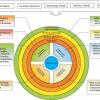Business Transformation Requires Transformational Leaders
Leadership and teaming skills are front and center in times of rapid change. Meet today’s constant disruption head on with expert guidance in leadership, business strategy, transformation, and innovation. Whether the disruption du jour is a digitally-driven upending of traditional business models, the pandemic-driven end to business as usual, or the change-driven challenge of staffing that meets your transformation plans — you’ll be prepared with cutting edge techniques and expert knowledge that enable strategic leadership.
Subscribe to Arthur D. Little's Culture & Leadership Newsletter
Insight
How do you want your billing? Per hour? Per second? Per millisecond? Amazon Web Services (AWS) now has them all.
How Do Industries Regulate and Supervise Cloud Service Providers?
Cloud service providers (CSPs) are a new breed of IT service provider, popular around the world and across industries, and so the regulatory spotlight is shining on them more as they acquire larger enterprise customers in regulated industries.
In this article, Evangelos Vayias and Ioannis Konstantinidis offer a roadmap for digital transformation and tell us how OTE Group used it to transform itself “from a ‘fast-bleeding,’ bureaucratic telco into a modern, competitive, high-performance service company” through the application of IoT-related technologies.
This Advisor proposes a five-“I” framework for carrying out a discovery process to uncover opportunities for innovation and continuous improvement in business applications. Application development and support teams can use this framework for running continuous improvements using collaborating innovation and proactively address the evolving needs of business.
Agility, the ability to change direction fast when change is needed, is not something achieved by training your teams in a base set of practices. That might improve efficiency, but it doesn’t, of itself, give the ability to change direction rapidly. If you need agility, you need people who understand; who understand what is appropriate in the new context, and who can switch to doing that very rapidly.
This article examines the way the data collected over the IIoT ecosystem of interconnected humans and machines can be collected, managed, and exploited. The authors focus particularly on a concept they call "enterprise personal analytics" (EPA) and provide a digital transformation roadmap companies can use to adopt EPA, examining the emerging concept through different perspectives (company, worker, and modality) and related concerns (individual information systems architecture, knowledge and intellectual property, motivation and remuneration, information governance, and quality assurance).
We’re in the very beginning of a revolution dubbed the "Internet of Things," which enables us to propose and develop solutions for interacting with everything connected to the global Internet. Today, it’s the time for everything, rather than everyone, to get connected.
In this Advisor, we provide an overview of our view on the role of the enterprise architect as a catalyst in enabling business transformation, driving innovation, and managing the innovation lifecycle.













